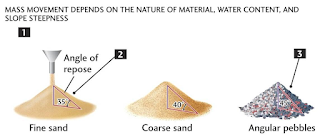VOLUME OF DISTRIBUTION
The volume of distribution (VD) , also known as apparent volume of distribution, is used to quantify the distribution of a medication between plasma and the rest of the body after oral or parenteral dosing.
- It is defined as the volume in which the amount of drug would need to be uniformly distributed to produce the observed blood concentration.
- Volume of distribution may be increased by renal failure (due to fluid retention) and liver failure (due to altered body fluid and plasma protein binding). Conversely it may be decreased in dehydration.
- The volume of distribution is given by the following equation:
- Therefore the dose required to give a certain plasma concentration can be determined if the VD for that drug is known. The VD is not a physiologic value; it is more a reflection of how a drug will distribute throughout the body depending on several physicochemical properties, e.g. solubility, charge, size, etc.
- The units for Volume of Distribution are typically reported in (ml or liter)/kg body weight.
- The fact that VD is a ratio of a theoretical volume to a fixed unit of body weight explains why the VD for children is typically higher than that for adults, even though children are smaller and weigh less. As body composition changes with age, VD decreases.
Drug VD Comments
Warfarin (8L) Reflects a high degree of plasma protein binding.
Theophylline, Ethanol (30L) Represents distribution in total body water.
Chloroquine (15000L) Shows highly lipophilic molecules which sequester into total body fat.
Vd rarely corresponds to a real volume & thus also called APPARENT volume of distribution….
Approx physiological volumes for a 70 kg man:
- Plasma~3 L
- ECF ~ 16 L
- TBW ~ 42 L
Vd can exceed physiological volumes as seen in above
Why is apparent V sometimes greater than physiological volumes?
Why is apparent V sometimes greater than physiological volumes?
Consider the following model which assumes that drug in the body is distributed in the plasma and one organ…
Amount of drug in body = Amt in plasma + Amt in tissue(s) A = AP + AT
V*C = VP *C+ VT *CT
Assume, Kp = CT/C
Where, Kp = Tissue: Plasma partition coefficient (affinity)
Assume, Kp = CT/C
Where, Kp = Tissue: Plasma partition coefficient (affinity)
If drug has high affinity for tissues (Kp), Apparent tissue volume (Kp*VT) is Therefore V is ses.
Conceptual illustration of effect of drug distribution into tissue space on V:
Consider 100 mg of a drug is added to 1 L of water in a beaker under two circumstances and the liquid is sampled for drug concentration (C).
Scenario 1:
Consider 100 mg of a drug is added to 1 L of water in a beaker under two circumstances and the liquid is sampled for drug concentration (C).
Scenario 1:
Drug is added to pure dissolution medium. So the total amount of drug is available for the medium to be evenly distributed.
Scenario 2:
Drug is added to the dissolution medium containing activated charcoal that absorbs 99% of the drug, thus only 1mg of the drug is available to be distributed.
Fraction of drug in and outside plasma
Fraction of drug in and outside plasma
Effect of plasma protein and tissue binding on V:
- Plasma protein binding LIMITS distribution
- Tissue binding ENHANCES distribution
- Drug can bind with plasma proteins (eg. Albumin, AAG, etc). Or tissue components
- One measure is free fraction (fu)
- fu = Cu/C = Unbound drug conc./Total drug conc.
- 0< fu <1
- Generally, fu <0.1 highly bound; fu > 0.8 weakly bound
- Some considerations of therapeutic importance:
- C may not appropriately reflect Cu if,
- Highly bound (fu0) :C and Cu can differ significantly
- fu ↓↑ across therapeutic concentration range
- Potential alterations in disease states (eg. renal disease)
Assumes:
- Only unbound drug may cross membranes
- Free drug concentration is same everywhere in the body
- Equilibrium
C + P = drug bound to plasma proteins
C + T = drug bound to tissue proteins
Cu = Unbound drug concentration in plasma
Cu,T= Unbound drug concentration in tissue
VP = Plasma volume
VT = Tissue volume
Amt of drug in body = Amt in plasma + Amt in tissue
A = AP + AT
V*C = Vp *C+ Vtw * Ctw
Dividing through by C
A = AP + AT
V*C = Vp *C+ Vtw * Ctw
Dividing through by C
V = Vp + Vtw * (Ctw/C)
• Ctw=Total tissue concentration of drug.
• Fraction unbound in plasma, fu = Cu/C
• Fraction unbound in tissue, futw = Cu,t/Ctw
(Cu = Cu,T based on model assumptions)
Rearranging above equations in terms of Cu
fu/futw = Ctw/C
Where is the drug in the body?
- fu↓ V ↓
- Highly bound in the plasma ; distribution confined to vasculature not available for tissue distribution
- fu,T ↓, V ↑
- Highly tissue bound (eg. digoxin) • For drugs that are neither preferentially bound in plasma nor tissue, V varies between ECF (16 L) and total body water (42 L), depending on ability to access ICF.









Comments
Post a Comment